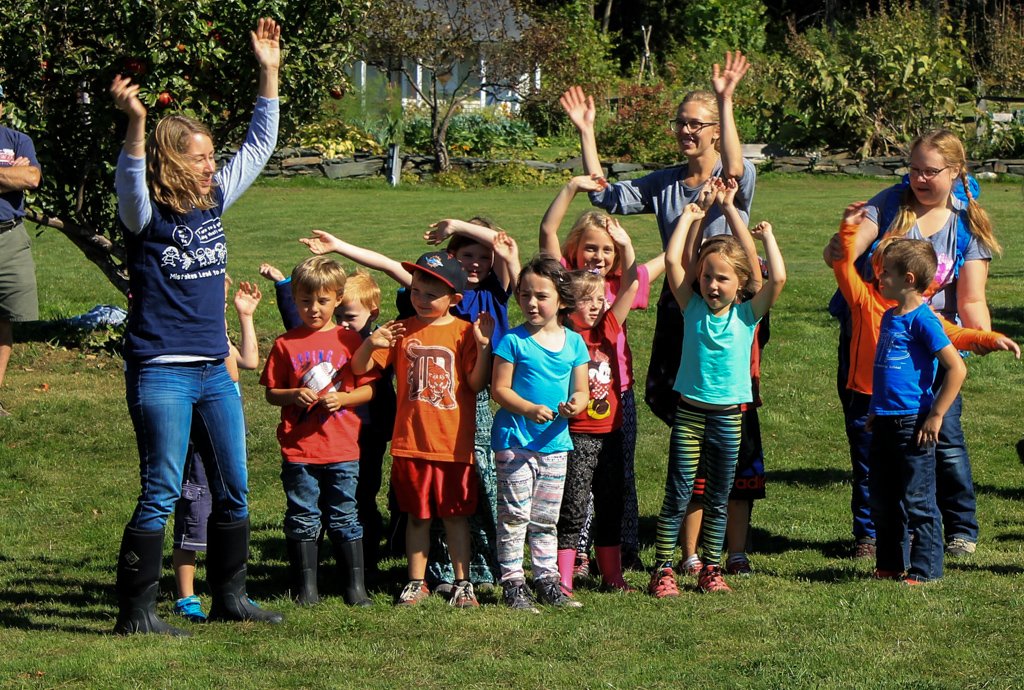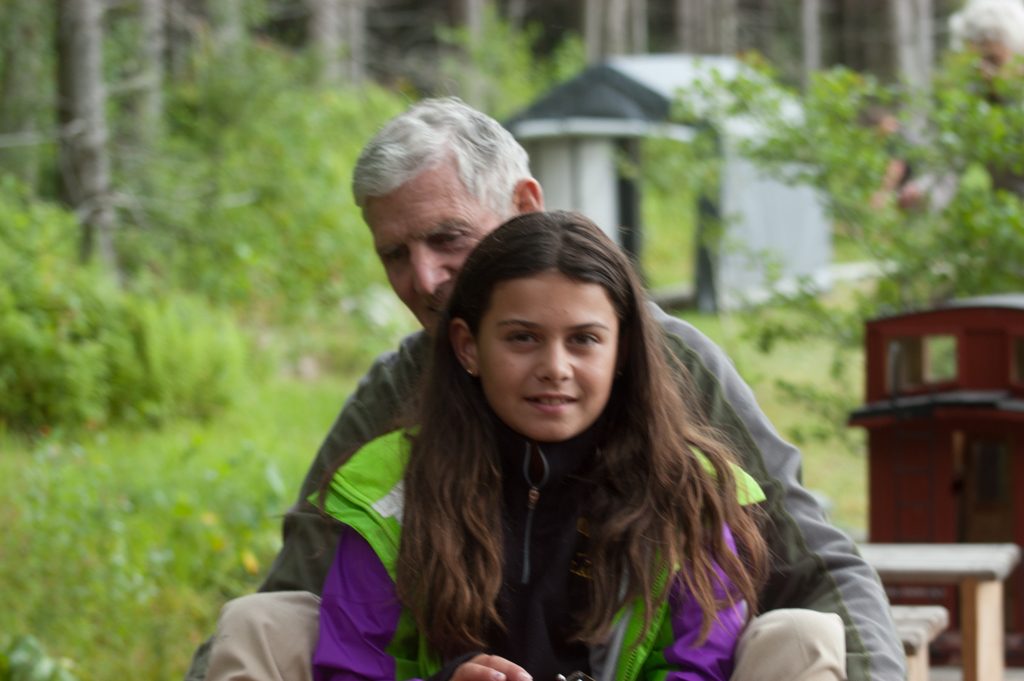
“It takes a Child to Raise a Village”
Children have a natural need to engage and explore the world around them, starting with the more immediate, protected and accessible areas of the home and moving outward into nearby lawns, fields and streams, as they seek to explore the world around them, spontaneously, with safety and on their own terms. When children are active in the environment they build their inner confidence that that occurs with the mastery of skills, the simple shake of a rattle, touching a pet, crawling, walking and speech are all the starting points for an increasingly complex array of incremental skill development: building a bird house, catching a frog, digging a garden, planting a seed, writing a story and singing a song. The skill is important in itself, the self confidence that comes with mastery, priceless.
The beauty of human development is that it is interconnected and holistic, the practice of increasingly complex motor skills will be the building blocks for cognitive development as children seek to attach language to their physical experiences of walking, running, jumping, talking and sharing. They are also psychological because the confidence that comes with mastery is vital for identity development in adolescents and throughout life, every gain in childhood is a gain throughout life.
Our goal at the Commons is to create an environment at the farm that fuels learning and human development for every member, in the same manner that an orchestra conductor creates an environment in which each member of the orchestra can succeed, in their own terms, while being an integral contributor to the collective performance of the entire orchestra. To do this, we start with nature, because nature is so present, abundant and diverse at the farm and always changing. Today, for example, it is bitter cold a good time to learn about managing wood stoves, processing and organizing fire wood, strategizing how to keep buildings warm, telling midwinter stories and playing together on sleds and skies.
We can start with provisions for child safety like a strategically located fence and walls to keep them protected. Security and safety balanced with the challenge for mastery is essential for their growing confidence, start with little steps then bigger, start with simple projects then more complex. Today a simple alignment of stones brookside, tomorrow a miniature wall, then a tiny stone garage for a toy truck or a house for dolls. Help children to feel safe, encouraged and loved so that they feel the support that lets them challenge themselves again and again.
Children at first close to home with lots of play, games, picnics then they make the gradual expansion from tame lawns and gardens toward more far flung adventures with streams, wetlands, trails, bridges and walls they will walk, run, ride bikes, and ski all winter long. Now they can toss a ball, hide, dig, find frogs, have picnics, build forts, little huts, roadways, models, gardens and tool collections.
This can only happen in an environment where there are friendly, caring and responsible adults committed to engaging children on their own terms. We can design many places where adults and children converge, a picnic area, in the garden, on the trails, or doing projects together in a common space dedicated to play, learning and a shop.
There is the lovely African proverb “It takes a village to raise a child.”
This is our credo, we are a village in the mountains eager to create a world where children thrive and grow, we are a kind of extended family. This means team work, attention to details, planning and following up along with applying lots of skills and knowledge ranging from patience, understanding to how to tie a shoe lace, plant a flower, take care of a pet, make music, write and dance and much more, for we are a diverse community with many skills, interest and knowledges that we are eager to share.
Human development is always reciprocal, children effect adults just as we affect them. With the act of helping others grow and develop we do the same for ourselves. For example, I help children understand the intricacies of the railroad, its tools, its history, the way things work that gets me to the engineering principles that it trains are grounded in.
 In our train exchanges, I can’t do presentations without understanding my own understanding of what I know about the train and how I can best explain that to a twelve-year-old mind. In doing so, I can see and evaluate how I communicate and the impact of my information. This same journey can happen a hundred times a day, in a garden, on a playground, at a picnic, with a computer, around a tractor, with a book or camera and on a hike-teachable moments are everywhere which is the gift of our great big landscape.
In our train exchanges, I can’t do presentations without understanding my own understanding of what I know about the train and how I can best explain that to a twelve-year-old mind. In doing so, I can see and evaluate how I communicate and the impact of my information. This same journey can happen a hundred times a day, in a garden, on a playground, at a picnic, with a computer, around a tractor, with a book or camera and on a hike-teachable moments are everywhere which is the gift of our great big landscape.
This is why it takes “a child to raise a village” because as they grow and flourish, we will do likewise and we need them just as they need us. Our goal is to empower children and, in turn, they empower us to do what we do and often love-- better. Children will someday be adults themselves and the same process will repeat itself anew with the next generation.